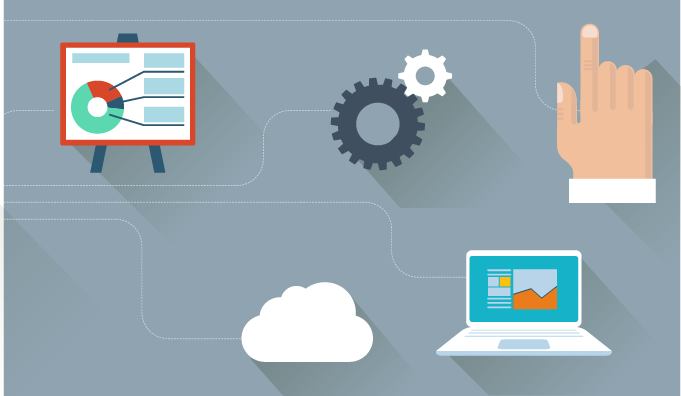Although there are a variety of different IT Service Management (ITSM) processes, Knowledge-Centered Service ® (KCS) should definitely be one your organization takes advantage of.
Companies often don’t realize how beneficial the KCS framework can be until they implement it into their own operations – especially when it comes to getting buy-in for self-service.
In simple terms, KCS is a service method that focuses on knowledge as a key asset of your organization. But, as you might have expected- there’s a lot more that goes into it. KCS is especially beneficial to organizations looking to improve their ITSM maturity and push more people to use self-service vs submitting tickets or contacting a help desk.
Defining KCS
We all know that knowledge is power. So why don’t organizations make the knowledge they have as accessible as possible in order to help employees and customers?
Knowledge-Centered Service is a great way for companies to improve service delivery and increase satisfaction by focusing on the knowledge they have and collect during their regular support interactions with customers and employees.
By using KCS, you can improve your IT service delivery and build out a knowledge base that can be used for self-service and integrated with your portal. With KCS you are able to extend your support capabilities without needing additional staff or budget resources. This is a great way to maximize your resources, especially when they’re limited.
Key KCS Functionalities
KCS provides a number of benefits to both the provider of the service and the receiver. It’s convenient for the receiver of information (your customers or employees) because helpful information is more easily accessible, but it also helps the provider (your company) because you no longer need to spend time fixing small issues that someone can resolve on their own – these issues can be things like answering “how do I reset my password” or “how can I get Wi-Fi access?”
When an organization adopts KCS, there is a focus centered around curating knowledge- whether that’s creating new content or collecting content that already exists. As this information is collected (through tickets or emails) articles can be created in a knowledge base for self-service.
Technicians or end-users can generate articles and support documentation that can go through an approval process before being published. This means that anyone who has trouble can go to the knowledge base within your portal to find an accurate, up-to-date resolution and avoid contacting support, ideally limiting the number of tickets that are submitted.
Obviously, each knowledge base will be comprised of different information depending on your organization. However, as an example, let’s look at higher education.
Within this industry, the usage of KCS can allow students to find answers to their IT-related questions, as well as answers to questions regarding academics, financial aid, housing, etc. Should a student have a question regarding something that isn’t in the knowledge base, a new article can be created. However, it is very likely that the answer they are searching for already exists if the institution is using KCS principles.
ITSM Benefits of Using KCS
When it comes to KCS, there is an abundance of ITSM benefits. To start with the obvious, it saves time. Instead of using personnel to complete common requests like resetting passwords or reserving a conference room, the IT help desk is able to focus on larger, more complex issues. This is especially true if you have an integration and automation layer integrated with ITSM. This allows people to use your portal to automatically solve issues like name changes in Active Directory or getting software licenses – depending on how your workflows are set up. This reduces strain on IT employees and motivates them to contribute more valuable work by giving them the ability to offer additional and better services.
As for the customers, they are served in a more time-efficient manner and are provided with answers right when they need them through self-service. This, in turn, results in customers that are more satisfied. Additional benefits include:
- Lower inbound call volume.
- The ability to keep your content accurate and up to date by crowdsourcing knowledge.
- Tools to address increasing demands.
- A solution for organizations facing tighter budgets and thus cannot fill as many positions.
- Opportunities for professional development.
KCS in Action – How One Organization is Using KCS to Improve Service Delivery
Since adopting KCS through TeamDynamix, the University of South Dakota has seen great success with self-service.
The school began looking for a new ITSM solution after realizing how much information was spread out among different locations. Paula Cottrell, Knowledge Manager for the University, explains their previous situation, saying “We had a Wiki page. We had information siloed within team-specific SharePoints. We had old ticket notes, and we had employees with their own knowledge saved on their computers.”
This unorganized system decreased productivity and efficiency and led to teams wasting time searching for different information and answers.
After implementing the KCS methodology with TeamDynamix ITSM and building out their knowledge base, they saw an 18-percent reduction in time logged to service tickets.
After just one month after adopting KCS, the University had more than 2,000 people taking advantage of the knowledge base and 31,000 page views. Six months later, there were 31,000 users and 262,000 page views, with 5,000 knowledge articles being included in the base.
To learn more about how you can implement KCS as part of your ITSM strategy check out: 5 Keys to Pairing ITSM and Knowledge-Centered Service
©KCS® is a service mark of the Consortium for Service Innovation™.

